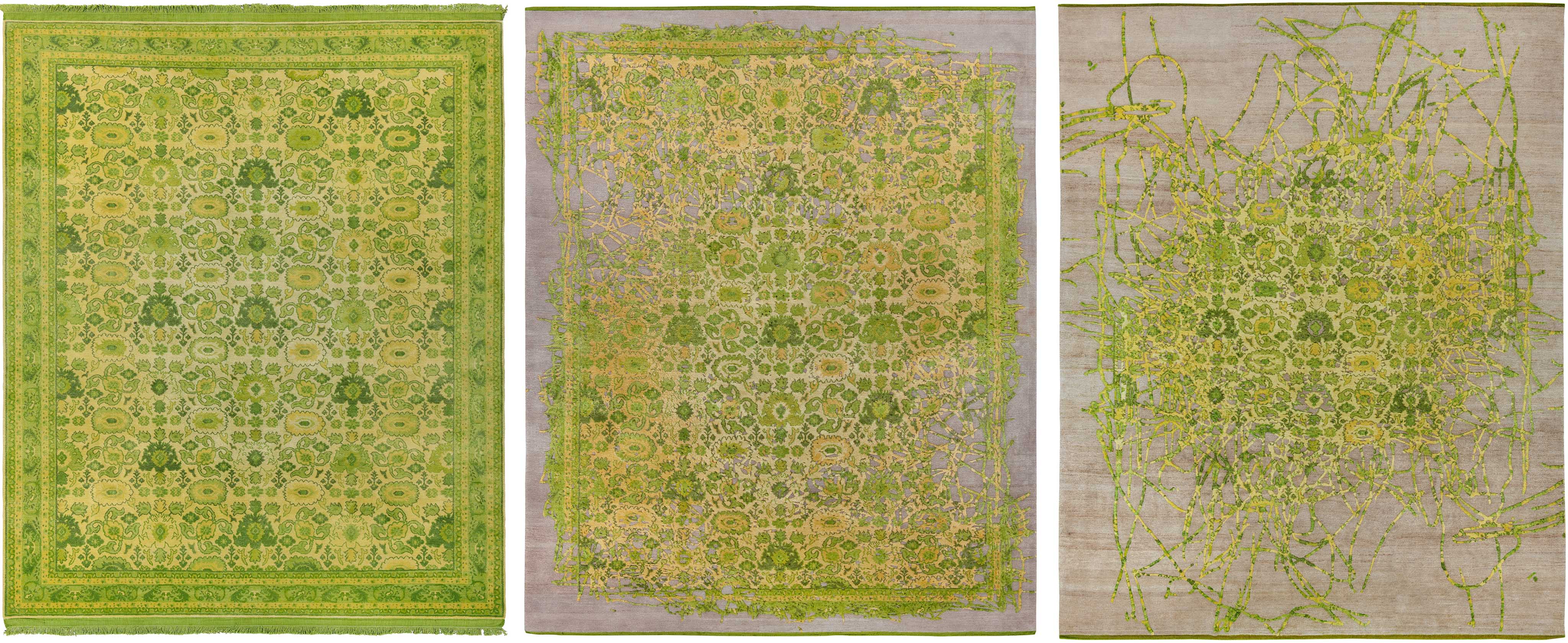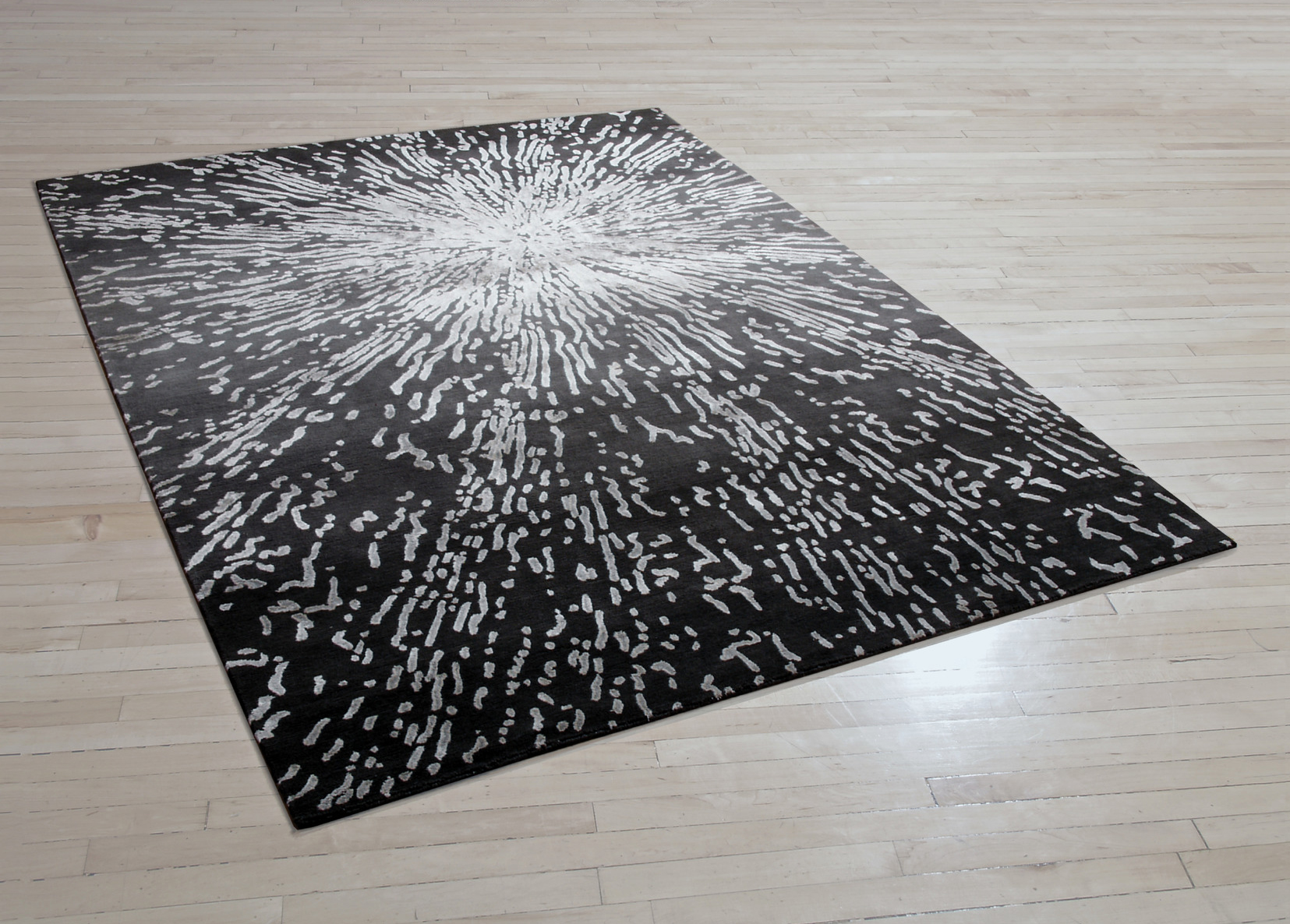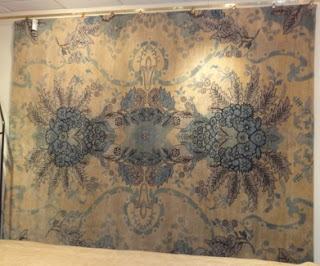This article originally appeared on The Ruggist on 17 December 2012 C.E. under the same title. On 22 June 2018 C.E. it was re-edited and updated to correct minor name and content changes as well as to provide better quality images.
Perhaps it best to begin where the prologue that was my last article left off. As you will recall, I introduced the topic of copyright, and specifically asked: ‘What happens when one manufacturer impersonates the style and aesthetic of another?’ The short answer is found in the article I wrote for the Winter 2013 Issue of COVER magazine (along with Ben Evans and Jessica Franses – Full Disclosure: I was paid for the article.): A knockoff is copying – theft – and it is wrong. My opinion on flagrant and blatant copying is clear, but there are of course an endless myriad of permutations between copying and – to the other extreme – the unattainable ideal of pure original creation, and it is the discussion of this spectrum that is integral to the topic at hand.
‘True originality of design in rugs is a great thing. Unfortunately it is spurious – it doesn’t exist. If someone can create something that seems new and different that deserves a nod. But it all came from somewhere else. Today a camera and a computer seem to have unlocked a tidal wave of ‘original’ designs. We must remember these are not new art forms being summoned from the primordial ooze. Beware the ancient Greeks’ concept of Atë – self delusion.’ – John Kurtz, now retired Founder of New Moon Rugs.
I have been most fortunate in my life to not only have been able to sell rugs and carpets created by, but also to work with and become friends with, some of the great personalities in contemporary modern rug production, but it is Mr. Kurtz whom I must single out for his passion and self-awareness. The rug industry – and indeed many creative industries – is full of larger than life egos who think that their latest rug creation is as pure and original as an english translation of say the Bible, or for those wishing to avoid the topic of religion and also on topic: Homer’s Iliad. It is with that metaphor I hope those less myopic see the fault, with respectful appologies to those who do not, in arguing that what we create is solely pure and truly original.

Kurtz is right. While it remains electrifying to behold a stunning newly made carpet, the ideas, the inspiration, the spark, that allowed that carpet to come into being, did not come from the void. It came from the experiences of those would create. Take, for example, an admission from the designer (and a brief analysis) of the ‘Erased Heritage’ Collection from Jan Kath. To quote ‘The Erased Heritage collection pays homage to the traditional Oriental carpet. Finding inspiration from old patterns, techniques, and standards of quality, Jan Kath also turns to old master weavers to bring these designs back to life. Knot by knot, they hand produce Egyptian Mamluks, Iranian Bidjars, and Turkish Konyas using the original colors.’ While the ‘erasing’ of the designs is a trademark of Jan Kath’s aesthetic, the inspiration behind the design could just have easily have been an old well worn Bidjar in your grandmother’s dining room. Regardless of the intelectual pursuit of determining the source of inspiration, the fact remains that Kath was inspired, potentially by a worn out carpet somewhere; he did not create – nor am I saying he claims he did – the idea of a worn out carpet, but he did bring a stunning new to us interpretation to the idea of what a ‘worn’ carpet can be.
If Kath can be inspired by an old worn out carpet, it stands to reason that anyone could so be inspired, and therein lies the major argument spewed forth by those in the rug industry who would create copies. But as always it is not that simple. No two people share the same creative mind, nor the artistic and life experiences that drive their work. Sure I could show Kath an inspirational image or object, and I could show [[INSERT ANOTHER RUG DESIGNER NAME HERE]] the same, asking them to each create a carpet design based thereupon, but I can assure you the statistical likelihood of the resulting designs being the same is, oh how does one say, negligible at best.
As I am particularly fond of the quote from James Ffrench of New York’s Beauvais Carpets, we must once again revisit the aforementioned COVER article on copyright: ‘If we did not copy from each other then there would only be one person cooking with fire.’ Mr. Ffrench is of course correct in his assessment, but his statement should not be interpreted as to encourage boldface blatant straight copying of the work of another – that is to say knockoffs – as he continues, ‘Straight copying is just unethical’, but rather to acknowledge, as Kurtz does, that we are not creating in a vacuum. There remains a distinct and proper difference between the agreeable nature of two rugs being based on the same creative concept, that is to say inspiration if you will, and the bitter distaste of two rugs looking identical, that is one being a knockoff. So how is it then that the singular aesthetics and first to market work of any of the well and indeed lesser known names within the rug industry, mysteriously[!] appear as knockoffs? What motivates those who would make rugs from designs directly copied from the work of others? Well, to quote my now ex-husband who had long suffered by listening to my incessant rambling about the rug industry, and in lieu of the long promised but never delivered interview with him, I offer his opinion as to why: ‘They (those who make knockoffs) are lazy and greedy.’
Take the flagrant example detailed by the Toronto Star article titled David vs. Goliath, which first appeared on Thursday, 1 December 2011 C.E. in which the civil case of Creative Matters, Inc. vs. Korhani of Canada, Inc. is examined. Korhani stood accused by Creative Matters of copying the Carpet Design Awards recognized design ‘Nova’ from Creative Matters and producing it as an inexpensive machine made knockoff. The Star article does a great job of examining the backstory as to how Creative Matters came to know of the alleged knockoff, how they subsequently filed suit, and that they ultimately settled the case, but it stops short of calling a spade as such. So….

I mention this example first, as it is interesting to note that in its initial response to the suit Korhani claims that its design (which for the record is, in my professional opinion, exactly the same as, even though inferior in construction to, the design from Creative Matters) was created wholly independent of the work of Creative Matters. As you can guess I find this assertion preposterous. A company specializing in the production of inexpensive machine made plastic shlock – where you can put a rug design into a computer and it will spit out on the loom mere minutes later, created an original design in house, and then only chose to take it to market after the critical success of the ‘Nova’ carpet from Creative Matters. I think not, and I think it to be farcical anyone would think that to be valid defence in this day and age. Sure the entire works of William Shakespeare could be duplicated given infinite time and a room full of monkeys with typewriters (as the unproven theorem goes), but even if we allow such a naive and reductio ad absurdum argument, what would this say of the ‘creative’ department of Korhani? To argue that two identical designs are developed independently is simply bunkum.
What motivated such alleged manifest copying? Creative Matters is bared from discussing details of the suit due to a confidentiality clause in their settlement with Korhani (who is equally as tight lipped), so we are left to our inferences as to the what ‘really’ happened. In my analysis of the circumstances surrounding this case, my reading of the court documents (Download the PDF here!), and in my experience, I think it not presumptuous to say the allegations were far from false and more to the point, Korhani was likely culpable in their copying and did not want to suffer the public indignity of a formal judgement of guilt. Isn’t that convenient? A company does something allegedly wrong, is sued, but then because none of the parties directly involved can talk about it, we all go back to pretending it didn’t happen. So while it may be the case that we will never ‘know’ whether or not Korhani infringed on Creative Matters’ copyright, we can still talk about the publicly available details and form our opinions from there. We can also hold it up as an unscrupulous example of what not to do, guilty as charged, or otherwise.
At this point I would normally offer up some form of conclusion about copying and design inspiration, and whether or not Korhani was just being ‘lazy and greedy’, but not today. In its immediate stead I suggest we talk about something upon which we can all agree: Religion and Politics. Haha. I joke. No, my conclusion regarding copyright and inspiration (and who is lazy and/or greedy) and the difference between similar designs and copied designs must wait for a few more installments and examples, some more witty repartee, and more thoughts from the various people I interviewed on this subject. With that, think of the great Saturday Night Live sketch comedy: Co(aw)ffee Ta(w)lk. ‘Copyright Infringement: Is it about Copying? Rights? or Fringe? Discuss!’



